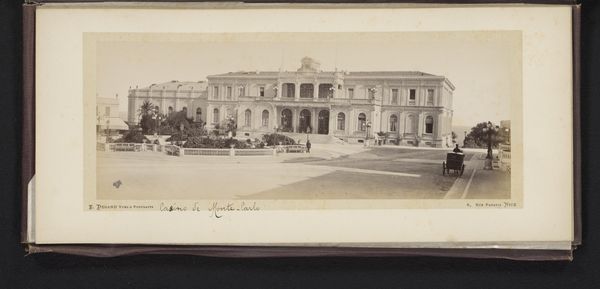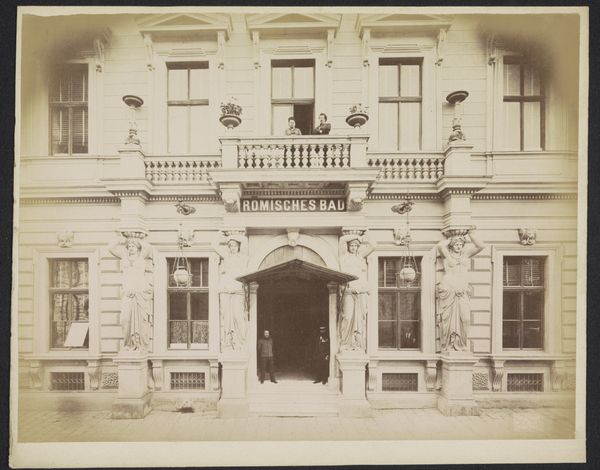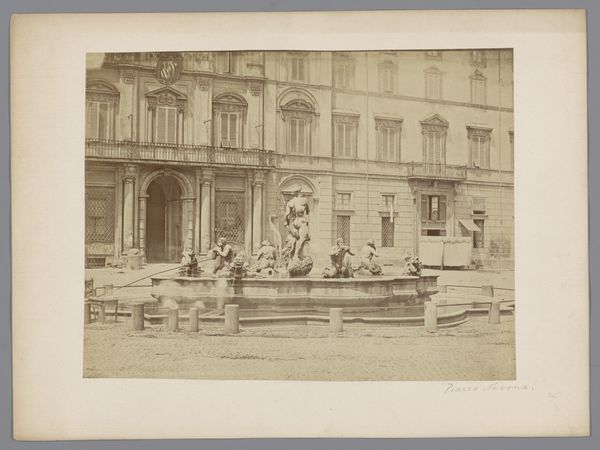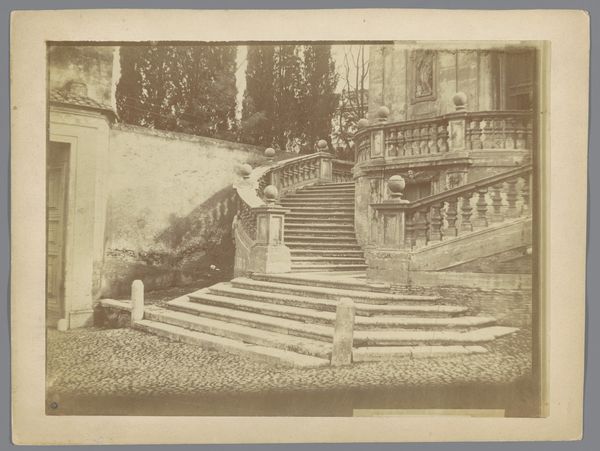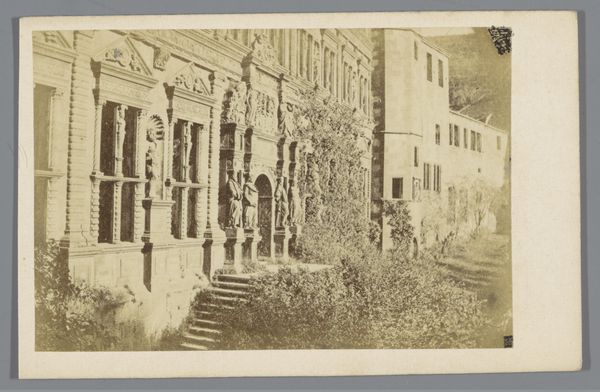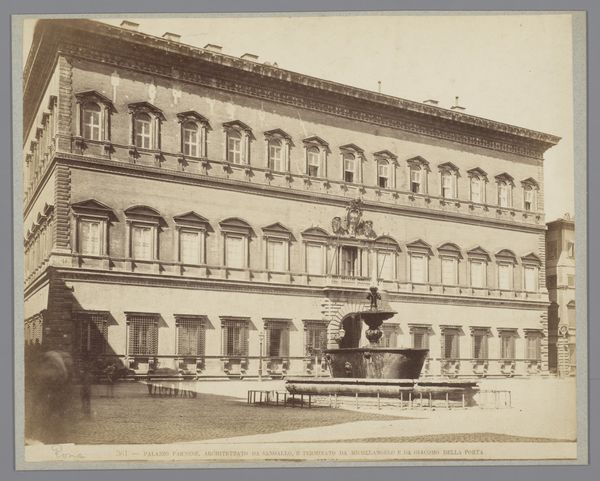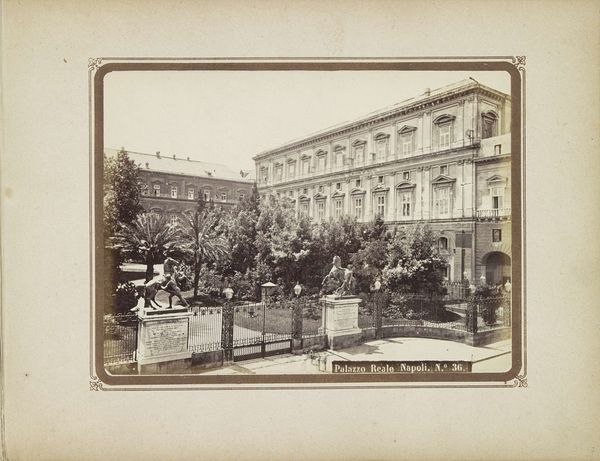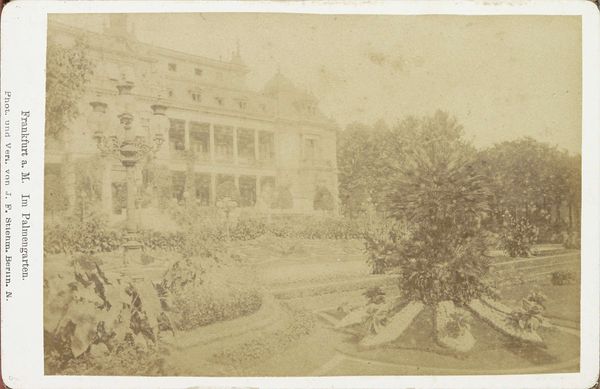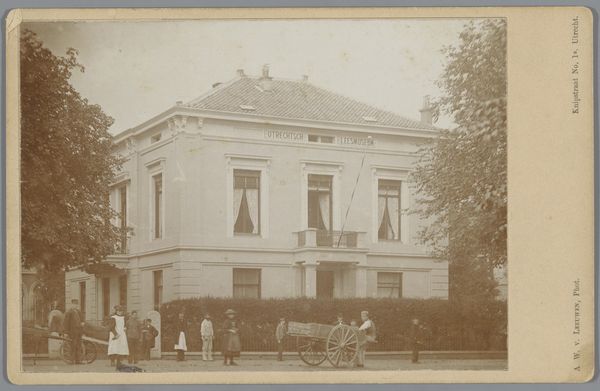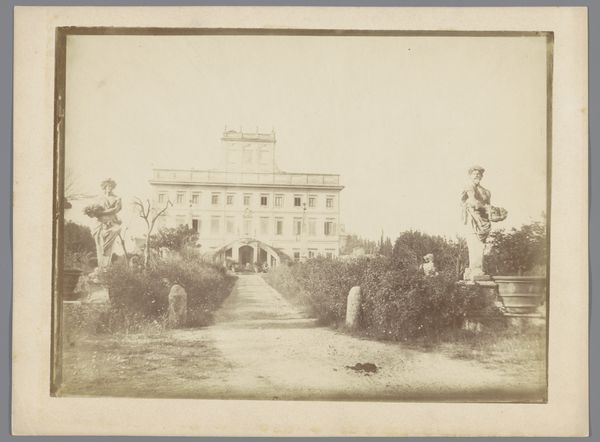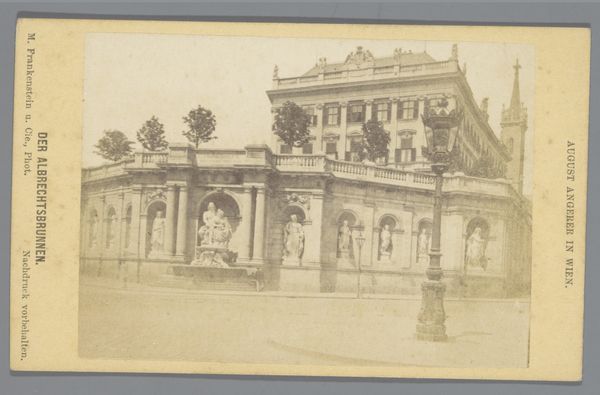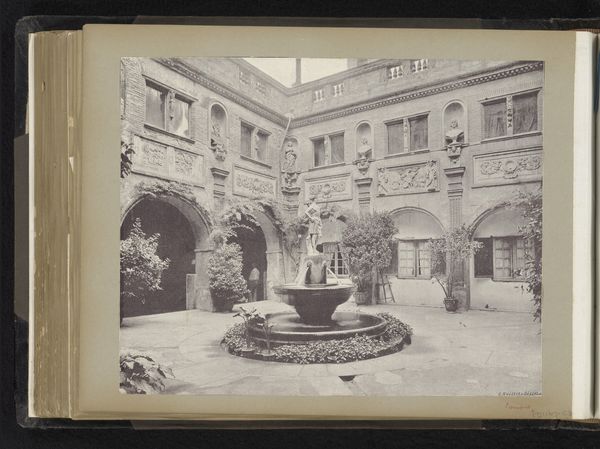
photography, architecture
#
16_19th-century
#
neoclassicism
#
photography
#
cityscape
#
architecture
#
building
Dimensions: height 204 mm, width 278 mm
Copyright: Rijks Museum: Open Domain
Gustave Eugène Chauffourier made this albumen print of the Bordes van Villa Altieri in Rome sometime in the mid-19th century. At this time, photography played a crucial role in shaping European perceptions of Italy’s cultural heritage. Chauffourier’s image captures not only the architectural grandeur of the villa but also the way the aristocracy visually separated itself from the masses. The monumental staircase leading to a private terrace becomes a potent symbol of social hierarchy. Indeed, the villa itself, with its ordered facade and classical sculptures, embodies the values of the Roman elite. The clean lines and balanced composition speak to the idea of power, permanence, and tradition. To understand this image fully, we might consult historical archives, architectural surveys, and social registers to better comprehend the Altieri family's position in Roman society and the symbolic weight of their residence. Doing so reminds us that a photograph is a document shaped by the social and institutional contexts in which it was produced and consumed.
Comments
No comments
Be the first to comment and join the conversation on the ultimate creative platform.
